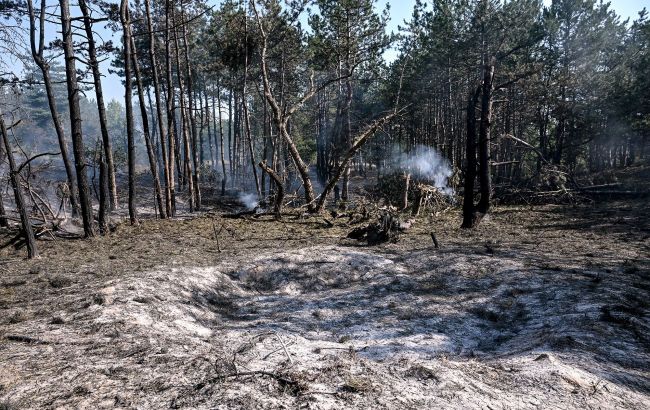War's hidden toll: Ukraine's forests need a century to recover
 What are the environmental consequences of the war in Ukraine (photo: Getty Images)
What are the environmental consequences of the war in Ukraine (photo: Getty Images)
Russia's full-scale war against Ukraine has inflicted devastating losses on the natural environment. The destruction of ecosystems already has long-term consequences for the climate, biodiversity, and agriculture, says ecologist Tetiana Tymochko, head of the All-Ukrainian Ecological League.
Change of ecological balance across vast territories
Since the beginning of the Russian invasion in 2014 in eastern Ukraine and the occupation of Crimea, experts and activists of the All-Ukrainian Ecological League in all regions of Ukraine have been collecting and recording facts of irreparable damage to the natural environment.
The long-term consequences of Russia's full-scale armed aggression since 2022 for the environment in Ukraine are systemic and multidimensional.
"They concern not only direct pollution of air, water, and soil, but also the change of ecological balance across vast territories. The prolonged use of heavy military equipment, mass fires, deforestation, and mining has led to large-scale degradation of natural landscapes. Disrupted ecosystems lose their ability to self-regulate, which can cause droughts, dust storms, and decreased yields on large areas," says Tymochko.
Forced migration of animals
The consequences for biodiversity are extremely dangerous. The destruction of natural habitats forces animals to change migration routes or disappear completely from certain territories.
"Damage to wetlands leads to the loss of nesting and wintering sites for birds, the disappearance of populations of fish and amphibians. Some rare species may be lost forever, which will reduce the natural resilience of ecosystems," explains the ecologist.
Forests, fields, and farmlands under attack
The restoration of forests, fields, and protected areas requires different amounts of time. Forest ecosystems are the most vulnerable. To restore destroyed areas, at least several decades are needed, and in some cases, it will take more than a century, says Tymochko.
"Fields and other agricultural lands will be able to return to use more quickly, but this process will depend on demining, cleaning, and comprehensive reclamation. And protected areas and wetland ecosystems recover slowly and unevenly, and the loss of their functions can be irreversible," the expert notes.
According to her, in the broader perspective, the war exacerbates climate challenges for Ukraine. The increase in greenhouse gas emissions, the destruction of carbon 'absorbers'—forests and soils—reduces nature's ability to curb global warming.
"This means that even after the end of hostilities, the country will face a combined burden: the need to restore the environment and at the same time adapt to climate change, which the war has only accelerated," Tymochko says.
.jpg) Serebrianskyi forest, a local nature reserve in the Luhansk region, destroyed as a result of hostilities (photo: Getty Images)
Serebrianskyi forest, a local nature reserve in the Luhansk region, destroyed as a result of hostilities (photo: Getty Images)
Reserves are also affected
Over 11 years in the zone of military action and occupation, 3 biosphere reserves, 14 nature reserves, 19 national nature parks, dozens of regional landscape parks, hundreds of wildlife sanctuaries, natural monuments, protected tracts, as well as botanical gardens, dendrological parks, zoos, and parks-monuments of landscape art in Donetsk, Luhansk, Kyiv, Sumy, Chernihiv, Kharkiv, Zaporizhzhia, and Kherson regions have been affected.
"Sixteen Ramsar sites with a total area of 627.3 thousand hectares and about 160 Emerald Network territories with an area of 2.9 million hectares are under threat of destruction in Ukraine. Russian occupiers are mining protected areas and reserves, carrying out uncontrolled deforestation, destroying rare species of flora and fauna," says the ecologist.

